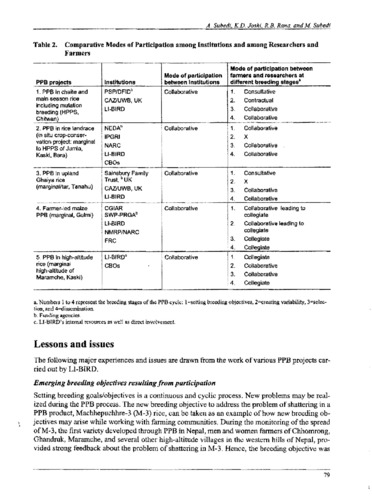Breeding for high yield in common bean
The traditional empirical approach to selection for yield in common bean has met with modest success. Breeding based on the concepts of ideotype, or for specific combinations of physiological traits, and/or for combining ability based on specific genotypic combinations, have not been universally useful. These approaches have been limited mainly by the procedures being deployed and the restrictions imposed by the type of germplasm available to the breeder. Breeding common bean for yield can only be accomplished successfully within the framework of very specific constraints of growth habit, seed size, maturity and gene pools. Therefore, yield relative to a specific production system is critical. A functional breeding system that could more effectively exploit the strategies of ideotype, physiology and/or combining ability is proposed within the framework of the major constraints that restrict progress in traditional breeding programs. Bean breeding programs need to be designed to accomplish the objective of improving yield while not neglecting the other non-yield related traits which dictate acceptance and which can limit progress. A program structured on a three-tiered breeding pyramid is proposed. The approach to yield breeding would be different at each level of the pyramid. The utilization and maintenance of diversity would be optimized at the lower level while uniformity and yield performance of elite lines would be maximized at the apex of the breeding pyramid. Activities at the intermediate level would involve adapted material more commercially acceptable than the lower tier but not considered elite. Materials developed at the lower levels would be designed to move upwards sequentially or be maintained for additional improvement and further introgression. Although breeding methods will differ at each level, breeders must recognize that a strong continuity between all three levels of the breeding pyramid is required. The breeding pyramid affords flexibility to permit the deployment of different breeding strategies needed to exploit the major genotypic and physiological differences between bean germplasm from diverse races and gene pools. Proven strategies for yield improvement based on the concepts of ideotype, physiology and combining ability, would be differentially utilized at each level of the breeding pyramid. Methods to improve efficiency in breeding for yield, at each level within the breeding pyramid, will be discussed in detail. Since breeders with limited resources struggle over the amount of effort to expend at each level of the breeding pyramid, suggestions will be offered based on experience with breeding for yield in other grain legumes.

